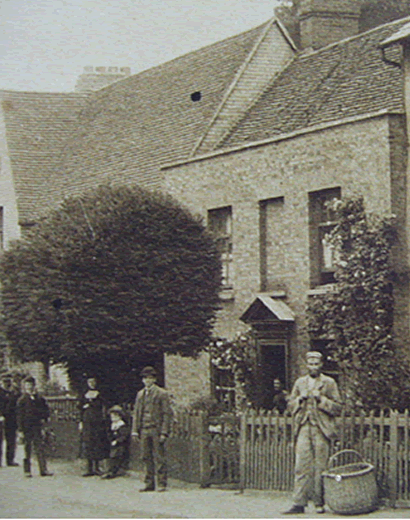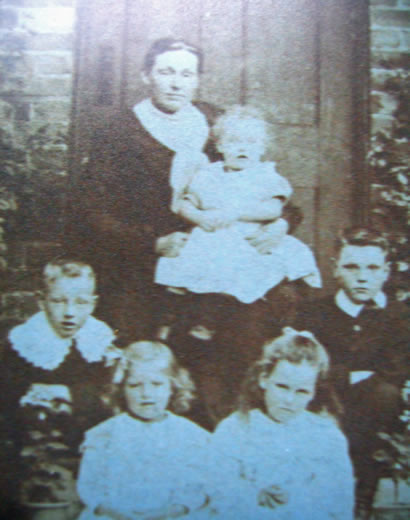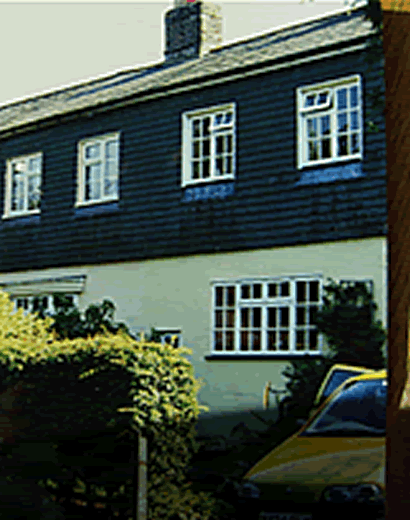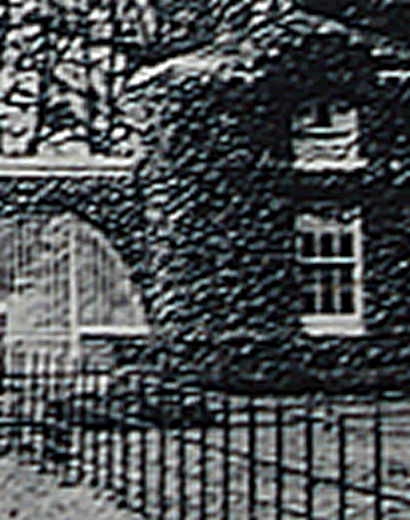Victorian photographer
One day, about 100 years ago, a Victorian photographer sets up his apparatus in Hertingfordbury, a village just outside Hertford, and the few people about paused to see what he was up to, or came out to see what was happening. He probably asked them to all stand still when he exposed his lens and the resulting picture is typical of so many taken at that period. (See Slide one of Images above) What makes this photo special is that my Mother, Emma Brown (nee Adams) ,the teenage girl under the round tree, loved to talk about her childhood in the village and told me who many of the people in the picture were. I made a note of them , and many years later I can now bring the old picture to life with some of the stories about the people in it.
My Grandmother, Mary Ann Adams, (See Slide two of Images above) the lady at the door of the house with the round tree, had lived with her husband Robert Adams, a shepherd, in a tithe cottage at Pipers End, (See Slide three of Images above)a nearby hamlet He was a big strong man and for a wager carried a heavy load of corn (some say it was a sheep) over a long distance and seriously hurt himself leading to his early death at 34. The widow and her six children had to get out the tythe cottage , with nowhere to go , but Lady Cowper of Pangshanger, had noticed the eldest boy pumping the organ at Letty Green church. When she heard of the widows plight, she arranged for the family to have the house with the round tree, for which my Grand mother was forever grateful.
To enjoy all the Images Click on Large image and then the arrow for slide show
It had four rooms , so she was able to take in lodgers to make a little money, and when the Italian stonemasons came to work on the lovely alabaster ,still in St. Marys nearby, they stayed with her. In those days the houses had no services--there was a pump at the back shared with other houses , and there was an earth closet in the garden. This needed digging out and carting away every few months but it was the most common way to deal with waste in villages when the houses were built. There was a stove for cooking and fuel was coal, if you could afford it, or wood that could be gathered in woods and hedgerows. My Mother lived until she was 93, and although we had central heating, she could not resist passing a nice bit of “kindling wood“,as she called it, without bringing it home.
The two adults looking over the fence on the left of the picture are Mr and Mrs Rayment, the local baker and his wife. The entrance to the yard at the back of the bakery is covered by the round tree. My Mother recalled one occasion when Mr Rayment took her on his horse and cart to get flour at the Ponders End watermill. Not far by car on the A 10 , but it must have taken many hours by horse and cart--and odd because there were many flour mills nearer..
The old gentleman with the walking stick on the left of the round tree was a Mr Parish, but my Mother never said what he was, but he looks like a retired son of the soil. Next came a young lad she referred to as “Nobby” Clark. There were four Clark brothers and all probably got called “Nobby” so we don’t know which one it was. We do know that three were killed in the First World War and one was awarded the Military Medal, so it could be the sad fate of the lad in the picture.
By my Mother is a little boy, the grandson of Mr and Mrs Thrussel, who lived next door. Mr Thrussell was a ganger on the railway, and no doubt was at work when the photo was taken. Then comes a man in a suit and bowler, named Butcher, but , again , I don’t know what he did for a living.
The figure in the foreground is George Gatlin, who worked at the bakery and the large basket by his side is what he carried the bread in when delivering orders. Up at the window on the house on the right with the Post Office sign, is Mrs Shepherd who must have heard the commotion and looked out to see what was going on. She walked many miles delivering telegrams until she was quite an old lady
My Grandmother spent part of her later life in the lodge gates to Brocket Park at Lemsford, (See Slide four of Images above) when Lord Mount Stephen lived there. Her oldest son, Robert, the little boy who pumped the organ at Letty Green Church, grew up to marry Annie Thrussell, the girl next door, and spent his life as a gardener at Panshanger, the house of Lord and Lady Cowper. Frank, the next boy, joined the army in the Huzzars and after serving in India was called back on the reserve for the Boer War and then became a horse policeman at Hemel Hempstead. Then came Harry, who was a carpenter. He volunteered for the Boer War and died out there at Senekal of enteric fever.. Alfred, the youngest boy, became a printer in Hertford before moving to Putney in London, where he lived most of his life. The eldest daughter, Mary, went to British Columbia, Canada, to marry her village sweetheart, Herbert Gardner, who was up at a little place called Van Winkle and finished the last part of her journey by stagecoach . My Mother , the youngest, met her husband to be at Handside farm, where Welwyn Garden City now stands, when he was a farmers boy. He later became a London policeman
I remember my Mother telling me how about the time of this picture she saw her first motor car going down the road past her house. In those early days of the automobile the car had to have a man walking in front with a red flag and it was this she vividly remembered. Nowadays the village is bypassed and very little through traffic goes by.
All this happened long ago, but the amazing thing about this picture is Hertingfordbury itself .
If you go there today and stand where the Victorian photographer stood, you will see that although the people and the round tree are all long gone, the houses are almost identical to how they were over one hundred years ago





